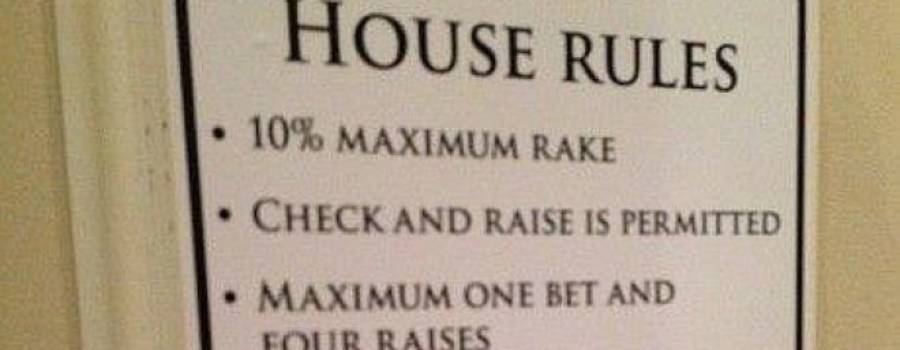Tag Poker
If you do much posting on poker forums, use poker tools or read poker strategy articles and books, you will no doubt run into discussion on poker player styles and terms like tight aggressive, loose passive, etc. What do these terms mean? Here are the basics of what they mean, which poker styles are best, worst and why.
Overall, a tight-aggressive strategy in poker in the most profitable one. Try to learn the TAG strategy by yourself and try to avoid or limit the number of TAG players at your table; The LAG (loose aggressive) A LAG plays many hands and is a player who frequently bets and raises, but only rarely calls bets. Tight-aggressive poker combines careful hand selection (tightness) with aggressive play. A tight-aggressive player (TAG) won’t play many hands, but they will take control of the hands they do play. A TAG player prefers aggressive actions like betting, 3-betting, and raising over passive play such as limping or calling. “Pokerqq81 - Situs Poker Online Indonesia Terpercaya Uang Asli Domino QQ pokerqiuqiu81.com merupakan Situs Poker Online Indonesia yang menyediakan permainan poker, live poker, domino qq, capsa susun, omaha, super 10, ceme keliling dan juga bandar ceme. Semua permainan ini bisa anda dapatkan dengan menggunakan 1 ID saja.
Tight Aggressive (TAG)
A tight aggressive player plays very few hands, relative to how many he is dealt, but when he does play a hand he is very aggressive, betting, raising and check raising. A typical tight aggressive player will only play about 20% of hands that are dealt to him. Tight aggressive players are the sharks in the poker ocean. The vast majority of long term profitable poker players fall under this tight aggressive category.

Why is the tight aggressive style a winning style? Poker rewards two things above all else, and that is patience and aggression. The tight aggressive player is a master at both. He waits on hands where he has the edge and then bets them aggressively. There are no major weaknesses to this style. One slight weakness can be observed in many TAGs, when the table becomes short handed. Now their 'tightness' can play against them, as blinds and antes are more frequent, and players must open up their starting hand requirements a good bit to compensate. In fact many tight aggressive players become a bit 'tight passive' when it is short handed poker.
Tight Passive (TP)

A tight passive player has great patience, and this is a good attribute to have. However, this player is not very aggressive, and this works against him. Tight passive players are often called rocks in poker. It takes a great force to get them moving. Tight passive players are usually profitable players too, if they pick their games well. They will make money from the weakest players in the game, loose passive players. However, they are easy marks to solid players who recognize them for their tight passive play. A tight passive player at a shorthanded table against TAGs will lose money fast, because the aggressive players will steal his blinds and antes practically every hand, and know to get out of the way when the tight passive player finally starts betting.
Tag Poker Play


Tight passive play can be a winning style, but it is strongly suggested that if you find that you are a tight passive poker player, to recognize this as a weakness. Ratchet up the aggression on your good hands. Bet out with those 4 flushes on the flop, or even raise with them to get a free card on the turn every now and then. A truly tight passive player can find many spots where a bet or a raise is a better strategy, then a check or call. As a tight passive player moves up on the aggression, he or she will see their wins increasing as well.
If you find yourself against a tight passive player, the strategy against them is simple. Bet and raise them into oblivion. If they play back, fold unless you have a very strong hand yourself.
Loose Passive (LP)
If TAGs are the sharks, then loose passive players are the fish. A loose passive player plays too many hands and he tends to just check and call. Poker rewards patience and aggression, and the LP player is neither! Playing against a loose passive player is a dream. Sure they'll suck out for an inside straight draw and even a 1 or 2 outter every now and then, but they will bleed money almost every session. Loose passive players are ATMs for pretty much every other poker style.
If you come to the realization that you are a loose passive player and are reading this, then it's a safe guess to say that this is probably some of the first poker strategy material you have ever read. That's fine! We were all little fish in the pond at one point. Pick up some poker strategy books from your local bookstore, and continue to read poker strategy articles on the web. Start lurking or posting in poker strategy forums. It is amazing how fast a fish can become a shark with just a little reading and studying of the game. There was a time when becoming a good poker player would cost you thousands of dollars, learning through experience. Now, a $20 investment in a good book, plus some free reading on the Internet can take you out of the pond and on the road to being a profitable player. We have seen players go from knowing little to nothing about poker, to positive earners at the very low stakes in just a month or two. The game is really not difficult to beat at the low levels. There are so many players who either don't care about strategy, or don't want to learn that the folks who do take the time, can earn a good side income from their poker hobby. Some players are just in it for entertainment. That's perfectly fine too. I know some people who spends hundreds of dollars a month on golf. You will spend money on what you enjoy, and if some players enjoy the rush of hitting a 4 outter a couple of times a session, more power to them!
How to play against a loose passive player? Very straightforward. Don't worry about being tricky. Bet when you have the best hand, check when you're not sure where you are at, as they will surely check right along with you. If a loose passive player does actually toss in a bet, give them credit for a strong hand! Finally, stay mentally strong. Loose passive players on a hot streak can hit some amazing hands and put bad beats on you quickly. If you get tilted, you may become a fishy yourself.
Poker Tag Stats
Loose Aggressive (LAG)
Maniac players can turn a boring session of poker into a wild roller coaster ride. They are in many cases super aggressive, betting and raising with little concern about what their cards are. They have one of the good attributes of successful poker players, and that is aggression. They'll win a lot of blinds and antes, steal many pots with nothing, and when they do hit good hands they almost always get paid off in a big way, since nobody believes they ever have a hand.
Sounds fun? It is an unprofitable way to play, unfortunately. Loose aggressive players do well against tight passive players in short handed games and even do decent against loose passive players at times. However, their desire to gamble is usually their undoing. While they'll win some huge pots every now and then, they will usually lose a lot more than they ever win in the long term. Loose aggressive players have huge potential, if they will just learn to control their desire to gamble and tighten up their hand requirements.
How do you beat a loose aggressive player? You have to be willing to call down with much weaker hands than normal. Ace high could very well take the pot against these guys. Use their aggression against them, and don't be afraid to check raise them at every chance, and make sure you cap it with your good hands. If the LAG player is on a roll and hitting good hands, you can very well lose a ton during the session. Hang in there and stay off tilt, and you could double or triple your buyin in an hour though. It is advisable to not play loose aggressive players in a short handed game, unless you are well staked, as a long session with loose aggressive players can rip a bankroll apart fast if things don't go your way.
Conclusion
These 4 player styles could be considered a box graph, with each corner being one of the extremes. Most players won't fall into an extreme, but they will generally trend towards one corner. Some players play different on different rounds, such as playing tight aggressive preflop, but then tight passive after the flop. Learning a player's style is the first step in knowing how to beat them, so be observant and take notes!



